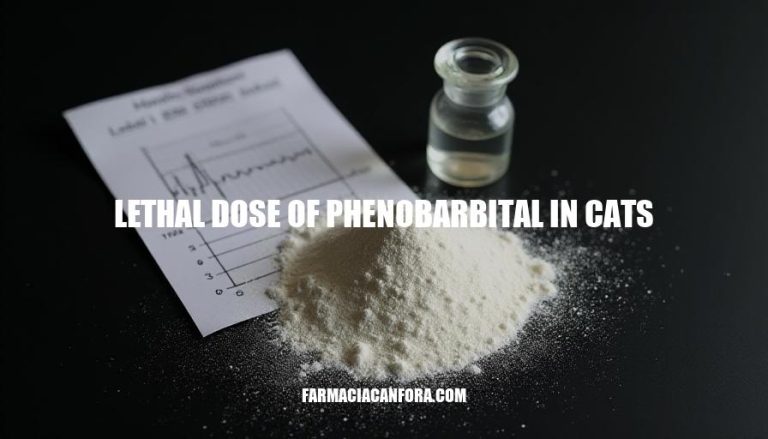


Phenobarbital is a medicine used to stop seizures in animals. It works by calming down electrical activity in the brain. Cats often take it long-term because it’s reliable and affordable.
The lethal dose of phenobarbital in cats is influenced by several factors, including age, weight, and overall health. The approximate lethal dose range for phenobarbital in cats is generally considered to be between 30 to 50 mg/kg. However, this range can vary significantly based on individual factors.
Age: Younger cats and kittens are more susceptible to the toxic effects of phenobarbital due to their developing organs and metabolic systems.
Older cats may also be more vulnerable due to potential pre-existing health conditions.
Weight: The dosage of phenobarbital is often calculated based on the cat’s weight. Overweight or underweight cats may require adjustments in dosage to avoid toxicity or subtherapeutic levels.
Overall Health: Cats with pre-existing liver or kidney conditions may be more sensitive to phenobarbital. The liver metabolizes phenobarbital, and impaired liver function can lead to higher levels of the drug in the bloodstream, increasing the risk of toxicity.
Case Studies: Research and case studies have shown variability in the response to phenobarbital in cats.
For example, a study published in the Journal of the American Veterinary Medical Association evaluated therapeutic phenobarbital concentrations in 30 cats with suspected or confirmed epilepsy. The study found that seizure control was achieved in most cats with serum phenobarbital concentrations between 15 to 45 μg/mL. However, some cats experienced adverse effects at these concentrations, highlighting the need for careful monitoring and individualized dosing.
Caution: Due to the variability in response and the potential for toxicity, it is crucial to monitor serum phenobarbital levels regularly and adjust the dosage as needed.
Phenobarbital should be tapered gradually to avoid withdrawal seizures, and any changes in the cat’s health or behavior should be reported to the veterinarian immediately.
In summary, the lethal dose of phenobarbital in cats is influenced by age, weight, and overall health, with a general range of 30 to 50 mg/kg. Individual factors and careful monitoring are essential to ensure safe and effective use of phenobarbital in cats.
cat owners and veterinarians can follow these steps:
Be aware of signs of overdose, including:
If an overdose is suspected, seek emergency veterinary care immediately. The veterinarian may administer activated charcoal to help absorb the drug and induce vomiting.
In severe cases, hospitalization may be necessary to provide supportive care and monitor vital signs.